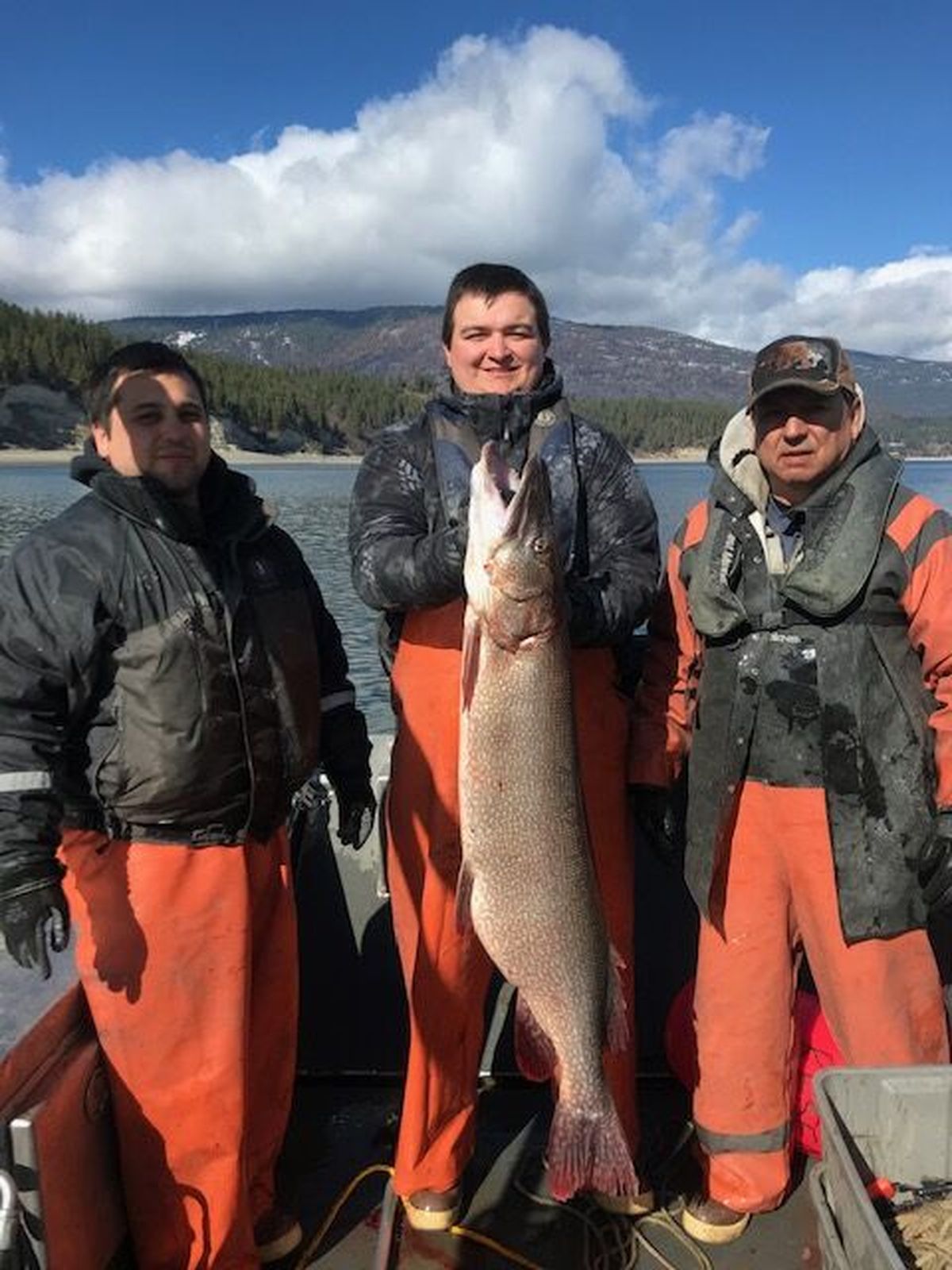Managers work to control spread of northern pike at Lake Roosevelt

If you are out fishing on Lake Roosevelt you may see a few more boats than usual as fisheries staff are busy catching as many northern pike as possible to reduce their impacts to native fish like salmon and steelhead.
The Lake Roosevelt co-managers (Colville Confederated Tribes, Spokane Tribe and the Washington Department of Fish and Wildlife) will have multiple fishing crews out on the lake until this fall.
“The field crews started suppression four months late due to the COVID-19 pandemic,” said Holly McLellan, fish biologist for CTFW. “We began limited sampling in June and catch rates have been low this year with only 265 northern pike removed. However, we have had a positive angler response with 390 heads turned in for the $10 reward so far this year. We will continue suppression work through November.”
The CCT primarily uses gill nets to capture northern pike and the nets being used are specifically designed to catch these fish and reduce bycatch of non-targeted fish. The nets are set in shallow water (less than 25 feet) in areas with low gradient. These areas are typically not occupied by native salmonids.
The co-managers began northern pike suppression in Lake Roosevelt in 2015 and since then, approximately 13,000 of them have been removed from Lake Roosevelt waters, with the majority (90%) being captured upstream of Hunters, also referred to as the upper section.
“We focused our efforts in Lake Spokane, a reservoir of the Spokane River upstream of Lake Roosevelt,” said Charles Lee, fish biologist for WDFW. “An emerging population of northern pike has been identified in Lake Spokane as a potential seed population to Lake Roosevelt and the Columbia River. We focused our efforts in the upper half of the reservoir where northern pike have been captured in previous surveys.
“We conducted five weeks of gill net effort with three boat crews and we set a total of 286 nets over the five weeks (May-June) and captured a total of 323 northern pike in various states of maturity, with many pre-spawn fish capture during the early weeks and more post-spawn fish towards the end of the sampling.”
WDFW plans to conduct monitoring and suppression efforts with the other co-managers at Lake Roosevelt this fall. A reservoir-wide fall monitoring survey is scheduled for early November.
“Removing northern pike protects our current fisheries and ensures everyone continues to have fishing opportunities in Lake Roosevelt,” said McLellan. “We are grateful for the publics support and continued participation in the Colville Tribes’ Northern Pike Reward Program.”
For more information about this program, go to: https://www.cct-fnw.com/news/ and scroll to the bottom. The pike suppression work is being funded by Bonneville Power Administration, Bureau of Indian Affairs, Chelan County PUD, Grant Country PUD and the National Park Service.
Northern Pike Facts:
- Northern pike can live more than 20 years, exceed 50 inches, and weigh up to 45 pounds. On average, they live six years and span 26 inches;
- Northern pike are known to be voracious predators that prefer soft finned fish such as rainbow trout, but will eat almost anything they can get in their mouth including sunfish, baby ducks and even bats;
- As an ambush predator that can consume 75% of their body length, they can devour juvenile and adult salmonids and other sport fish;
- They populate quickly, one adult female northern pike can produce up to 250,000 eggs;
- Given their size and ability to produce so rapidly, northern pike can quickly spread and alter environments;
- This is common with aggressive invasive species, as their population generally expands quicker as they get settled in new areas.
Unaware of the negative consequences to native fisheries, people first introduced northern pike to the Columbia Basin in 1953, in Dry Fork Reservoir, Montana. Since the introduction, people have transported northern pike to six other upper Columbia Basin locations.
Within the last several decades, northern pike have spread through the upper Columbia Basin through the Clark Fork River in Montana to Pend Oreille River, Idaho and Washington, and the Columbia River in Lake Roosevelt and the Columbia River in Canada, upstream to below Keenleyside Dam.
Northern pike are only two dams (Grand Coulee and Chief Joseph dams) away (89 river miles) from critical Columbia River salmon spawning habitat, where Washington has invested billions of dollars in salmon and steelhead recovery.
Efforts to combat northern pike expansion include:
- Listing northern pike as a prohibited species;
- Encouraging maximum northern pike fishing harvest without a size or daily harvest limit;
- Prohibiting northern pike transport;
- Implementing suppression programs in the Pend Oreille and Lake Roosevelt watersheds;
- CCT is offering a $10 bounty for every northern pike head turned in.